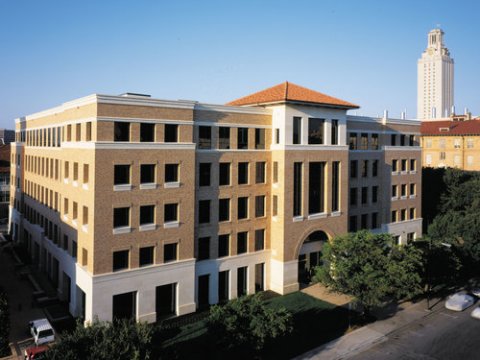Submitted by Moiz Rizvi on

While I was walking through the airport terminal-esque netherzone that brings your from the GDC to what I could at the time only describe as the GDC’s outgrown right arm (with a full cafe), I realized that I didn’t know the name of the building that I had been walking through routinely for the past year. It was a trivial thought with what had seemed like trivial motivations; it never seemed important enough to know until I realized I didn’t know it. I asked a passerby and he said he didn’t know. The third person I asked awkwardly replied “umm I think it’s POB... Peter Ordinal Building” with more self-doubt than a fourth-grader giving a lecture on algebra. (The mathematician in me heard “ordinal” but I checked later — it was “O’Donnell”.) I tiredly thanked him and was on my way.
I didn’t think about it again until I saw the unmistakable, heroic statue of Dr. Martin Luther King Jr. in East Mall. MLK is among the most revered figures in American history, why wouldn’t I recognize his statue. But who was Peter O’Donnell and why — despite the fact that he had a building named after him — had I never cared to learn about him? If I had a class in MLK 301, I wouldn’t walk into the building thinking Hmmm I wonder who this building is named after… I certainly wouldn’t have to ask three strangers about the name of the building before I learned that it was “Martin Luther King Hall.”
The reason I didn't know of O'Donnell's existence before that day is clear: Peter O’Donnell was not nearly as historically significant as Dr. Martin Luther King Jr. There was no question about that. But despite that, he did some admirable things. Though the only tangible impact he’d had on my life was that on rainy days I was able to walk indoors through his building on my way to real analysis, he certainly impacted the world in a meaningful way. Bill Powers described him and his wife as “among the greatest supporters of the University of Texas in its 130-year history.” And although I disagreed with him politically, I admired his life’s work and looked at it as a viable example for personal success. To that end, I could not say the same of MLK or any of our mythologized heroes. They were too deep in the pantheon, too high on Mount Olympus, to ever think about in real terms. I could step into O’Donnell’s frame and imagine his time after college working at a small bank, moving on to real estate, and eventually making his fortune in securities. His entry in politics and his eventual settlement in philanthropy. That storyline echoes the path that many of my friends are actively pursuing. At some point, I was among them.
Maybe you truly believe that Dr. Martin Luther King Jr. was a hero, maybe you were spoon fed your admiration for him by his abundant mythology. Regardless, looking up to him is convenient and as a result incredibly common. But almost no one finds his legacy accessible. I imagine very few people believe they’ll be the next MLK. (I also imagine very few believe their initials will be immortalized in that fashion.) Statistically speaking, most people are correct in their beliefs. But it’s so much more motivating when you can look at someone you admire and think I might be you someday; I think I’d like that.
It must follow then that learning about real heroes of human descent can bring you closer to the realization of your goals and dreams. Sometimes even physically closer. Like inside the building named in his honor.
P.S. To be clear, I admire MLK’s positive work. Mentioning him was not an attempt at a contrarian King critique, rather just a comparative metric of historical recognition.







